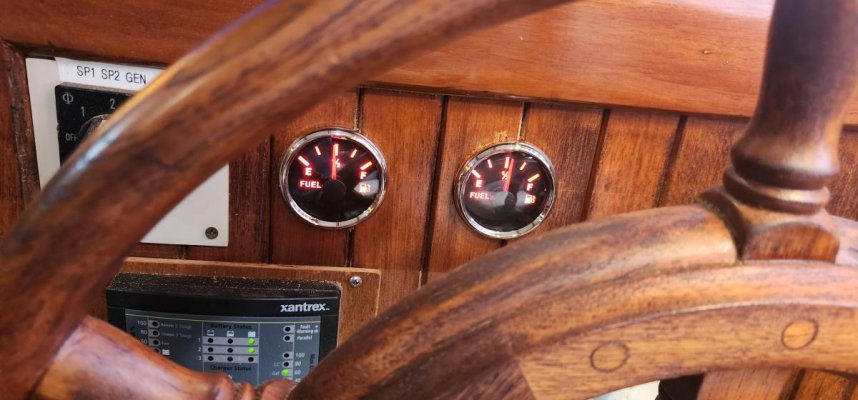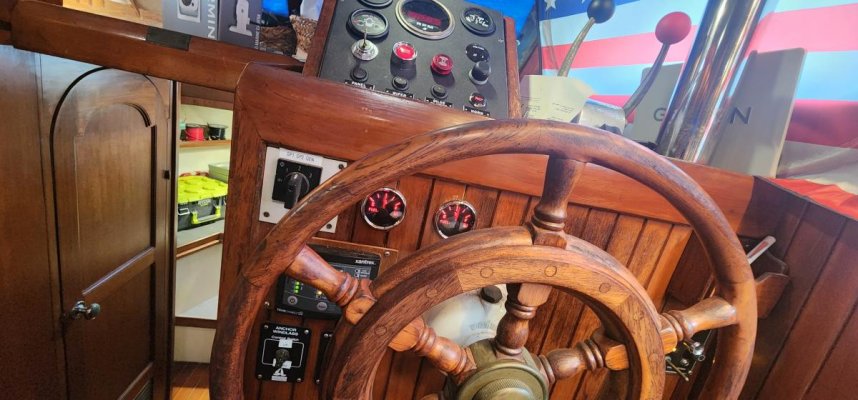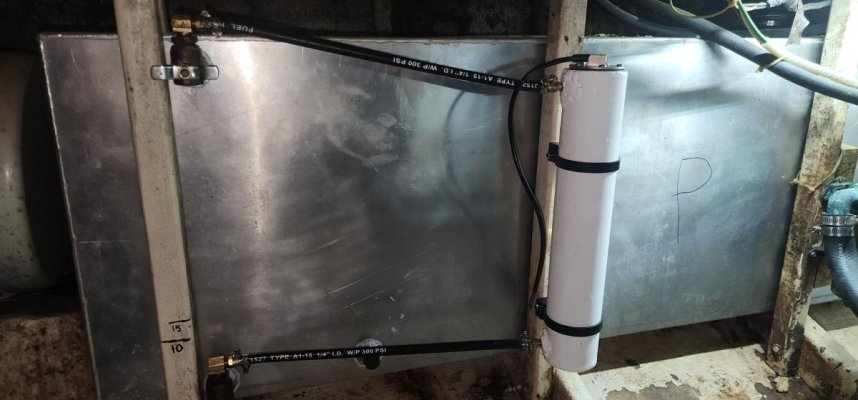Barking Sands
Guru
- Joined
- Dec 24, 2019
- Messages
- 966
- Location
- United States
- Vessel Name
- M/V Intrigue
- Vessel Make
- 1985 Tung Hwa Senator
A while ago I posted this idea to open it up for criticism. I had no gauges on the boat only sight tubes. No major issues were brought up so I went ahead and ordered the pieces. 3 inch aluminum tube .125 wall 6061T6 and some bungs. Welded those up with a spool gun
Not pretty, but pressure tested to 20 psi. Ordered fittings with extra long barbs that would allow double clamps. Ordered marine approved and rated hose and the senders and gauges x2. All in it was about $180 give or take. Of course I already had paint and primer and some materials. Add about 20 hours of labor including welding and painting. Labor was a bit high because I was not sure of the final destination of several things such as gauge location. Im sure it could be done in nearly half that or less.
Anyways happy to report it works great. Gauges have 8 backlight colors including one with no backlight but the needle and numbers light up. The gauge and senders are very nice when considering they were 35 bucks as a kit. I went ahead and bought a spare set gauge and sender for future repairs if needed. I am very very happy with the simple outcome.
Not pretty, but pressure tested to 20 psi. Ordered fittings with extra long barbs that would allow double clamps. Ordered marine approved and rated hose and the senders and gauges x2. All in it was about $180 give or take. Of course I already had paint and primer and some materials. Add about 20 hours of labor including welding and painting. Labor was a bit high because I was not sure of the final destination of several things such as gauge location. Im sure it could be done in nearly half that or less.
Anyways happy to report it works great. Gauges have 8 backlight colors including one with no backlight but the needle and numbers light up. The gauge and senders are very nice when considering they were 35 bucks as a kit. I went ahead and bought a spare set gauge and sender for future repairs if needed. I am very very happy with the simple outcome.
Attachments
Last edited:




